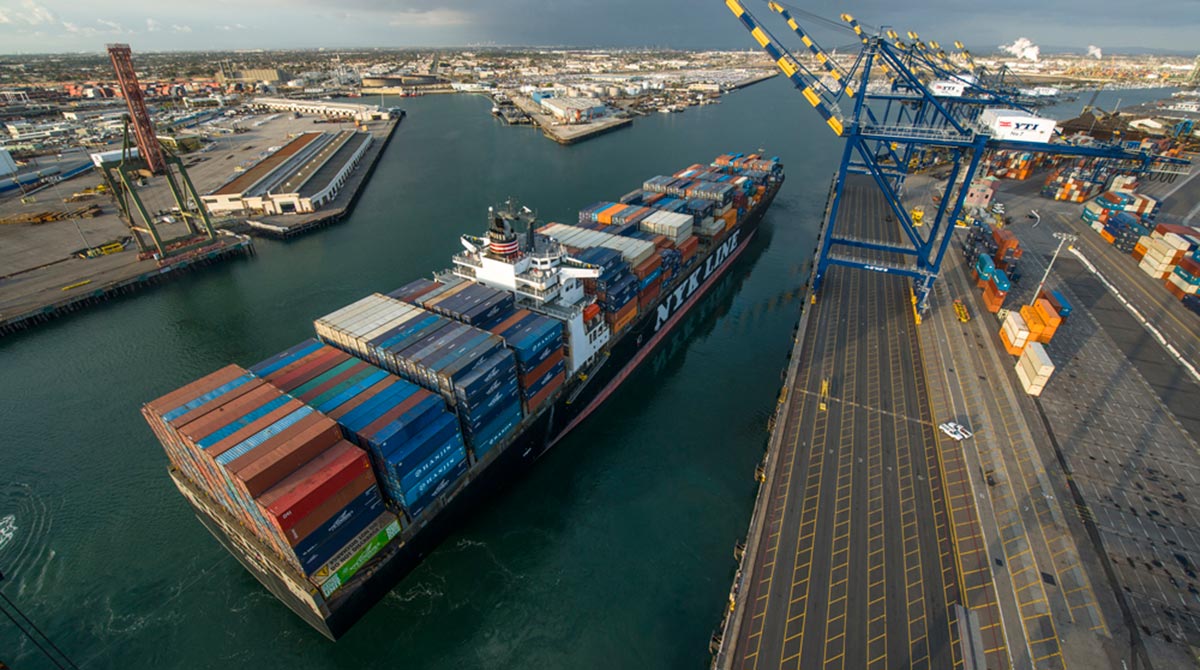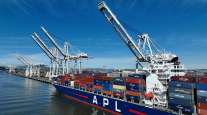Port of L.A. Sets New Cargo Record, Long Beach Lags Due to Hanjin Bankruptcy

Containerized cargo volume at the nation’s top two largest ports was mixed in November as Los Angeles continues to experience a record-breaking year and Long Beach suffers from the bankruptcy of the Hanjin Shipping Co.
The six terminal operators at the Port of Los Angeles, the largest in North America based on container volume, processed 877,564 industry-standard 20-foot equivalent units, or TEUs, eclipsing the all-time record of 814,574 set last month. The total volume is the largest monthly total at any port in the Western Hemisphere, according to data from the American Association of Port Authorities. Last month’s results were 24% higher than November 2015.
RELATED: As Florida ports expand, officials call for continued funding to handle bigger ships
Loaded imported containers increased 22% to 437,050, while exports jumped 25% to 177,359 over one year ago. There was also a 25% surge in empty imported or exported containers.
“We are grateful to the cargo owners who see the value in this trade corridor and to our container terminal customers, labor and other supply chain partners who, working together, efficiently processed this extraordinary surge of holiday season cargo,” Port of L.A. Executive Director Gene Seroka said. “Their ability to handle this much volume is a testament to the resiliency and competitiveness of this gateway.”
Through November, the port handled 8.06 million TEUs, up 7% from the same 11-month period in 2015 and is poised to surpass the 8.16 million mark for the full calendar year. The Port of L.A. handled 8.34 million in 2014.
The result was negative at the Port of Long Beach, No. 2, which continues to suffer from the Hanjin bankruptcy in late August because the shipping line accounted for 12.3% of all the container traffic during the first part of the year and owned a 54% stake in Total Terminals International, which operates at Pier T at Long Beach.
The seven terminal operators at Long Beach processed 534,308 TEUs, a 14% drop compared to November 2015. Imports fell 12% to 270,610, exports declined 3.1% to 120,897 and empty containers dropped 24% to 142,801.
Through November, the total container volume is 6.23 million TEUs, down 5.6% from the same point last year. It’s unlikely the Port of Long Beach will be able to match the 7.19 million total from last calendar year and also could fall short of the 6.82 million container units it processed in 2014.
The silver lining for truck drivers is that the average time it took a truck to enter and exit the two ports dropped 15 minutes in November compared with October, according to data from the Harbor Trucking Association of Southern California.
On average, truck drivers spent 74 minutes in November at the Port of L.A. and 78 minutes at the Port of Long Beach. In October, it was 97 minutes in Los Angeles and 78 in Long Beach. The Harbor Trucking Association uses GPS to track trucks from the moment they enter the line until they pass through the exit, also known as turn time.
The quickest terminals in November were TraPac in Los Angeles at 52 minutes and Matson in Long Beach at 38. The slowest terminals were California United Terminals in Los Angeles at 117 minutes and Total Terminals International in Long Beach at 110. On average, more than 30% of truckers spent two hours or more at CUT and TTI versus less than 10% at TraPac and Matson.




